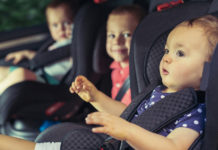Obesity is the second highest contributor to poor health and premature death in Australia and it’s on the rise, according to the Australian Institute of Health and Welfare.
In 2012, almost two in three adults (or 63%) were overweight or obese, 10% more than in 1995, while one in four children were overweight or obese.
Researchers cite a range of reasons to explain the increase: everything from what and how much we eat to how much exercise we do.
However, a new study is seeking answers in infant eating behaviours, how parents affect those behaviours and whether some babies are overfed.
Research shows babies who gain weight much more quickly than the average are about three times more likely to be obese at the age of two and five years.
There is strong evidence, too, that babies who gain weight too quickly are more likely than other infants to become obese adults, says Georgina Russell, from the UTS Faculty of Health.
Dr Russell, who is working with PhD candidate Jessica Appleton, co-investigator Cathrine Fowler and other UTS researchers, says obesity poses serious problems for physical and mental health and represents a significant economic cost.
“This study is going right back to the early days of feeding an infant to see what’s going on,” says Dr Russell.
She says babies do not naturally overeat: “When they are born, there is evidence they can self-regulate [their eating]. For example, they will drop off the breast when they are full.”
But babies can lose the ability to regulate their eating habits because of external factors.
The study will investigate how a mother responds to infant hunger cues to understand why some babies put on weight too quickly.
“You have to trust the baby to know when they are hungry or full and to tell you when they are hungry or full,” says Dr Russell.
That isn’t always easy. Babies use a range of subtle and potent “cues” to communicate hunger, pain, pleasure or tiredness.
Not one of the cues is good or bad, says Cathrine Fowler, professor for the Tresillian Chair in Child and Family Health at UTS. “They are just a communication system that we have [with babies] that is beyond words,” she says.
The risk is that parents or health professionals typically react to most cues by feeding a baby.
Parents who respond to what are called subtle “disengagement” cues, such as eye blinks, faster breathing or leg kicking, are more likely to have a settled baby, she says.
If you miss those subtle cues, the baby may ramp up their signals to get your attention.
“It is important to recognise the subtle cues and act early,” she says.
The study will involve 300 mothers with babies younger than six months. Recruited through Tresillian Family Care Centres, mothers will be asked to fill in an online questionnaire, with follow-up questions emailed to them after three months and six months.
The study will ask how good infants are at giving cues and how mothers respond, as well as looking at the role of formula feeding and breast feeding in the interaction between mother and baby. Tresillian nurses will observe how some of the mothers and babies interact during feeding.
Depending on what the study reveals, the researchers will design a program to help mothers recognise the cues their babies give them.
“When we look at how children develop obesity … the more support and guidance we can give mothers in the early days, the better the outcomes will be better for babies and for children,” says Dr Russell.
(Source: University of Technology – Sydney)










